For Lab Professionals
Capitainer® samples can be easily adopted in any laboratory.
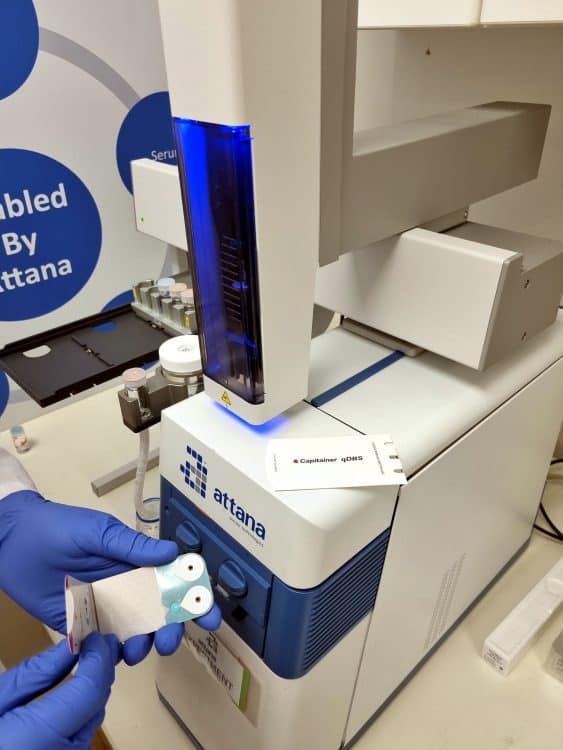
1) Laboratory Validation
Use of blood from tubes
Capitainer®B devices are designed for the use use of fresh blood. However, you might want to start your validation experiments with already collected venous blood and pipetting it to the cards in the lab. There are some aspects to consider when you do this:
- Do not use blood older than three days stored in the refrigerator and let blood come to room temperature before using it on the cards.
- All blood samples should be well mixed using a rocker prior to application to the card.
- If you use a syringe dispenser, you should make sure to apply blood to the cards within 5 minutes from last time mixing.
- 25-30µl is the recommended volume to apply to each inlet on Capitainer®B, which corresponds to the volume of a big drop of finger blood. On Capitainer®B 50, blood is applied until the channel is filled and reaches the stop line.
- Lyophilized blood products or previously frozen blood may not work.
- Make sure that the DBS disc is completely dry before removal. A wet disc might not detach correctly from the card.
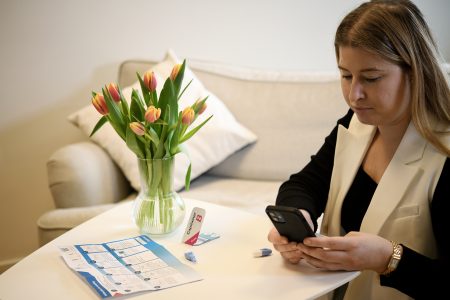
2) Shipping
Send by regular post to the lab
We have designed our paper based shipping method to reduce waste and minimise the carbon footprint of your workflows. The designated drying pouch is designed to ensure ventilation and give efficient drying as well as giving the sample card extra protection from physical damage in the posting process. The packaging approach follows the CDC triple packaging guidelines for DBS specimen collection.[1]
We strongly recommend the use of our supported shipping method.
However, if your analytes are sensitive to humidity and / or temperature, alternative approaches such as storing the samples in aluminium coated plastic bags and inclusion of desiccant pouches should be considered. The approach taken for individual analytes will need to be appropriately validated.
For more guidance, please check the extensive literature on DBS.
The paper ”Dried blood spots: Effects of less than optimal collection, shipping time, heat, and humidity” gives an introduction to the topic.
[1] Shipping Guidelines for Dried-Blood Spot Specimens (cdc.gov)
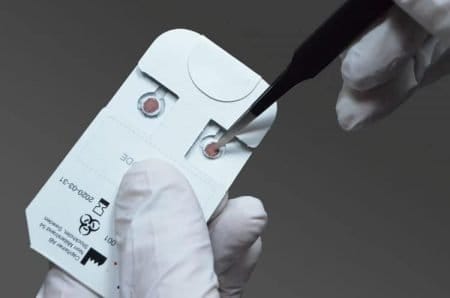
3) Pre-Analysis
Sample disc transfer
The sample disc in the card is easily accessed from the reverse by peeling away the protective tabs.
The sample discs can be removed manually with tweezers and put it into a suitable tube or plate for extraction. We recommend a flat tip tweezer and provide a recommended Capitainer disc removal tweezer.
Capitainer also provides a semi-automated pre-analytical handler, the PH96. The PH96 is equipped with a barcode scanner, optical detection of the disc in the wells and an optional cleaning step for the sample disc removal head between each sample. The semi-automated PH96 saves time and also ensures traceability of each sample for the downstream analysis process.
The PH96 system is calibrated at delivery for your 96-well plate of choice.
We highly recommend use of the automated puncher solution for larger projects and/or frequent analysis.
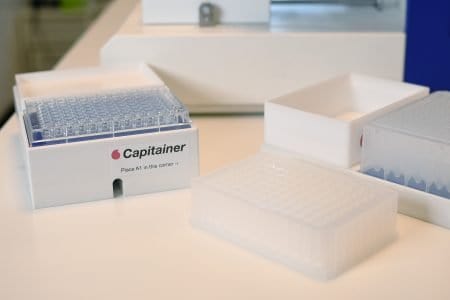
4) Elute the Sample
Reconstitute to liquid form
After collection of the sample disc, the sample is eluted. The choice of elution protocol and buffer is dependent on your analyte and downstream analysis. Published methods with conventional DBS samples are also applicable for Capitainer® samples and could serve as a guideline.
Standard Procedure:
Add your buffer of choice to the tubes or plate wells containing the discs. 100-150µl is a guide för Capitainer®B and Capitainer®SEP10 and 300-350 for Capitainer®B 50. This gives a 6-15 times sample dilution to calculate for in downstream analysis. The discs absorbs approximately 20µl or 80µl (B50) diluent that will not be recovered with the standard protocol. We do not recommend lower elution buffer volume than 50µl for an efficient elution process.
Vigourously agitate the tube/plate containing disc and extraction buffer for 30-60 minutes and then transfer the liquid to a clean tube or plate.
With Spin Filter Tubes/Plates:
To reduce the diluent volume and introduce a clean-up step, the use of spin columns/plates to elute the sample might be considered. This has the benefit of also recovering most of the 20µL liquid absorbed by the disc.
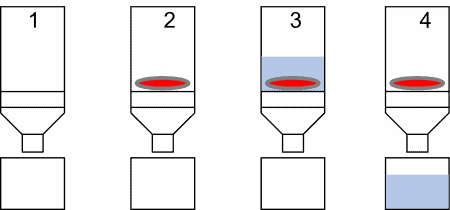
1. Choose appropriate filter for your analyte
2. Add the qDBS disc to the column
3. Apply buffer, agitate vigorously for 60 min
4. Spin down the eluate, discard column + disc
For automation setup, the use of this extraction principle has the benefit of producing an eluate without the DBS disc remaining at the bottom of the wells. This means that pipetting robots potentially can go down deeper in the well and thereby pipette from lower volumes.
Certain liquid handling robots can also handle filter plates, thereby enabling a fully automated workflow for assay setup downstream of the disk removal.
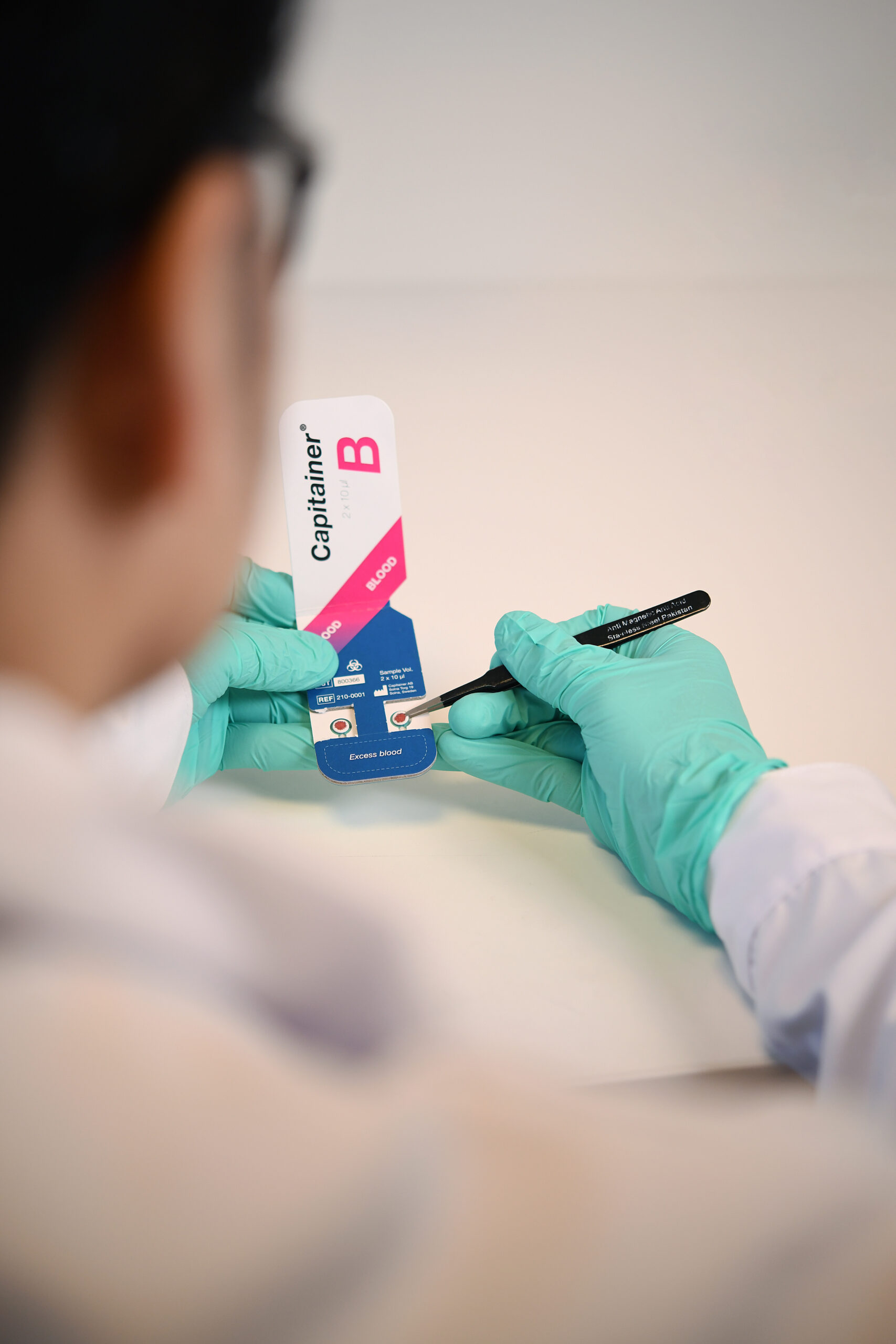
5) Analysis
Compatible with various techniques
The eluted samples are ready for analysis on your selected platform. Among the techniques and platforms used with samples from Capitainer are:
Mass spectrometry
Elisa
PCR
Capillary electrophoresis
Immunochemistry
Luminex xMAP®
Olink
Quanterix
The review ”State of the Science in Dried Blood Spots” describes a range of analytes measurable in DBS samples. These approaches should also be applicable to the quantitative analysis of Capitainer® samples.
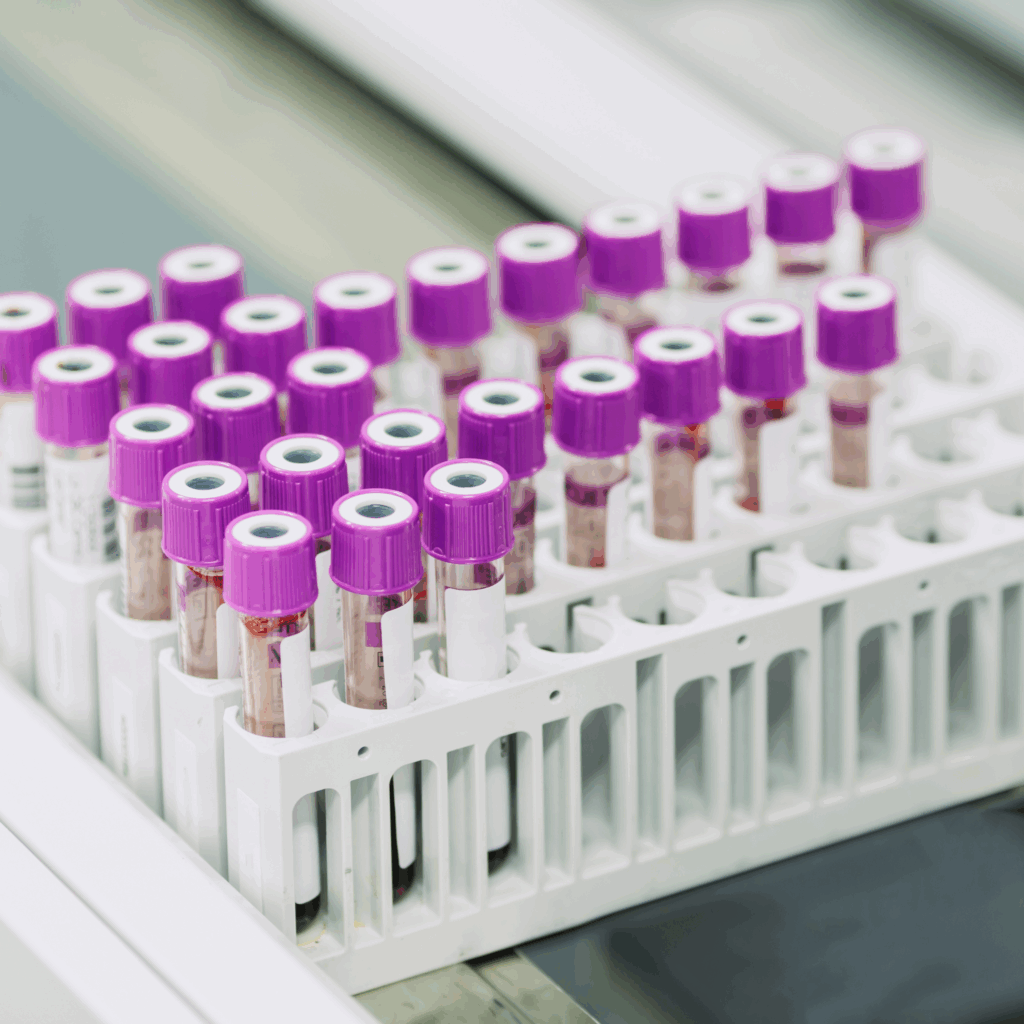
6) Post Analysis
Disposal and biobanking
For venous sampling, large volumes of blood are discarded, since only small volumes are typically used for analysis. Self-sampling with Capitainer® reduces this waste. Please, always follow your local regulations regarding waste handling of dried samples.
If not discarded, samples are often stored in biobanks. Venous samples are typically transferred to tubes and frozen at -80 °C. This is costly, consumes a lot of energy and takes up a large amount of space. Microsampling cards offer the possibility to biobank samples in a simpler and more cost efficient way.
The paper ”Stability of Proteins in Dried Blood Spot Biobanks” discusses the possibilities.
We hope this information was helpful to you!
If you have additional questions we are happy to help you further through personal contact.
